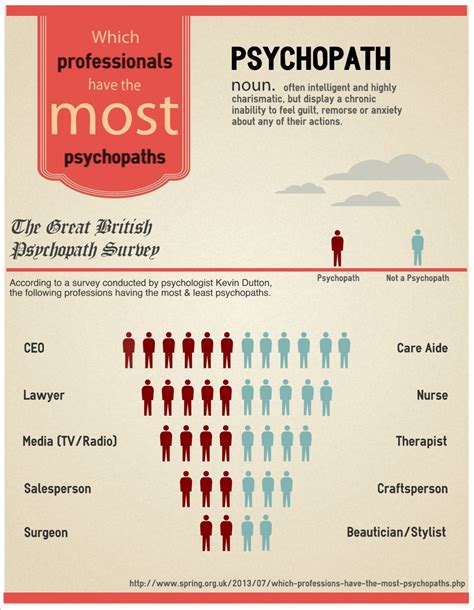
Certain tomatoes sold in Florida, North Carolina, and South Carolina are under scrutiny due to potential Salmonella contamination, prompting a warning from the Food and Drug Administration (FDA). The agency advises consumers in these states to be vigilant and has initiated an investigation to pinpoint the source and scope of the outbreak.
The FDA’s warning, issued recently, specifically concerns loose, fresh tomatoes that are not part of a processed food, such as canned tomatoes, sauces, or paste. “FDA is issuing this advisory out of an abundance of caution,” the agency stated, emphasizing the importance of consumer awareness and preventative measures. The agency is currently working with state and local partners to determine the source of the contamination and identify specific brands or suppliers involved.
Consumers in the affected states are urged to exercise caution when purchasing or consuming fresh, loose tomatoes. The FDA recommends asking retailers about the source of their tomatoes and avoiding purchasing them if the origin is unknown or uncertain. Restaurants and retailers are also advised to ensure their tomato supply is not implicated in the outbreak.
Salmonella infections can cause severe gastrointestinal illness, including diarrhea, fever, and abdominal cramps. Symptoms typically appear between 12 and 72 hours after consuming contaminated food. While most people recover within a week, some individuals, particularly young children, the elderly, and those with weakened immune systems, may experience more severe complications requiring hospitalization. The FDA encourages anyone experiencing symptoms of Salmonella infection after consuming tomatoes to seek medical attention immediately.
The investigation is ongoing, and the FDA will provide updates as more information becomes available. This includes identifying specific brands, suppliers, or regions linked to the contamination. Consumers and businesses are advised to stay informed and follow the FDA’s recommendations to prevent further illnesses.
Expanded Coverage and Context
The current Salmonella scare involving tomatoes in Florida, North Carolina, and South Carolina underscores the complexities and challenges inherent in ensuring the safety of the nation’s food supply. The FDA’s advisory highlights the vulnerabilities in the agricultural supply chain, from farm to table, and the potential for widespread contamination.
Understanding Salmonella and Its Impact
Salmonella is a group of bacteria that can cause diarrheal illness in humans. It is one of the most common causes of foodborne illness in the United States, with an estimated 1.35 million infections, 26,500 hospitalizations, and 420 deaths each year, according to the Centers for Disease Control and Prevention (CDC). The bacteria typically live in the intestines of animals and are shed in their feces. Contamination can occur at any point during the food production process, from the farm to the processing plant to the retail store.
Symptoms of Salmonella infection, known as salmonellosis, include diarrhea, fever, and abdominal cramps. In most cases, the illness lasts four to seven days, and people recover without treatment. However, some individuals may develop more severe symptoms that require hospitalization. Infants, young children, the elderly, and people with weakened immune systems are at higher risk of developing severe illness.
The FDA’s Role in Food Safety
The FDA is responsible for ensuring the safety of the nation’s food supply, including fruits and vegetables. The agency has the authority to inspect food production facilities, collect samples for testing, and issue recalls of contaminated products. The FDA also works with state and local partners to investigate outbreaks of foodborne illness and identify the sources of contamination.
The FDA’s approach to food safety is based on a risk-based model, which focuses on preventing contamination before it occurs. This includes implementing preventive controls in food production facilities, such as sanitation procedures, employee training, and temperature monitoring. The FDA also works with farmers to promote safe agricultural practices, such as proper irrigation and fertilization techniques.
Challenges in Tomato Safety
Tomatoes are a popular and versatile fruit consumed in a variety of ways, from fresh salads to processed sauces. However, tomatoes are also susceptible to contamination with Salmonella and other pathogens. Several factors contribute to this vulnerability:
- Growing conditions: Tomatoes are often grown in open fields, where they can be exposed to contaminated water, soil, or animal waste.
- Harvesting and handling: Tomatoes are often harvested and handled manually, which increases the risk of contamination.
- Washing and processing: Tomatoes are typically washed and processed before being sold to consumers. However, if these processes are not properly implemented, they can spread contamination.
- Storage and transportation: Tomatoes are often stored and transported for extended periods, which can allow bacteria to grow.
Previous Tomato-Related Outbreaks
This is not the first time tomatoes have been linked to Salmonella outbreaks. Over the years, numerous outbreaks have been traced back to contaminated tomatoes, highlighting the ongoing challenges in ensuring their safety. These outbreaks have resulted in hundreds of illnesses and hospitalizations, underscoring the severity of the issue.
In 2005, a large multistate outbreak of Salmonella Newport infections was linked to raw tomatoes. Over 170 people were affected in 21 states. The investigation revealed that the tomatoes were likely contaminated at the farm level.
In 2008, another significant Salmonella Saintpaul outbreak was linked to raw produce, including tomatoes and peppers. This outbreak affected over 1,400 people in 43 states and Canada. The investigation was complex and initially struggled to pinpoint the exact source, eventually leading to the implication of multiple produce items.
In 2018, a Salmonella outbreak linked to tomatoes sickened more than 200 people in 23 states. The source of the contamination was traced back to a specific farm in Florida.
These past outbreaks have led to increased scrutiny of tomato production practices and stricter regulations aimed at preventing future contamination. However, the current advisory indicates that challenges remain.
Industry and Regulatory Response
The tomato industry and regulatory agencies have taken steps to improve tomato safety in recent years. These include:
- Good Agricultural Practices (GAPs): GAPs are a set of guidelines for agricultural production that are designed to minimize the risk of contamination. These practices cover a wide range of topics, including water quality, soil management, pest control, and worker hygiene.
- Tomato Good Agricultural Practices Harmonization Initiative: This initiative aims to harmonize GAPs across different regions and countries to ensure that tomatoes are produced according to consistent safety standards.
- Increased FDA inspections: The FDA has increased its inspections of tomato production facilities to ensure that they are following GAPs and other safety regulations.
- Traceability programs: Traceability programs allow consumers to trace tomatoes back to the farm where they were grown. This can help to identify the source of contamination in the event of an outbreak.
Consumer Advice and Recommendations
The FDA is urging consumers in Florida, North Carolina, and South Carolina to take the following precautions:
- Ask retailers about the source of their tomatoes: Consumers should ask retailers where their tomatoes come from and avoid purchasing them if the origin is unknown or uncertain.
- Wash tomatoes thoroughly: Wash tomatoes under running water before eating them. Use a scrub brush to remove dirt and debris.
- Store tomatoes properly: Store tomatoes in the refrigerator to slow the growth of bacteria.
- Cook tomatoes thoroughly: Cooking tomatoes to an internal temperature of 165°F (74°C) will kill Salmonella bacteria.
- Avoid eating raw tomatoes if you are at high risk: Infants, young children, the elderly, and people with weakened immune systems should avoid eating raw tomatoes, as they are at higher risk of developing severe illness from Salmonella infection.
- Seek medical attention if you experience symptoms: If you experience symptoms of Salmonella infection after consuming tomatoes, such as diarrhea, fever, and abdominal cramps, seek medical attention immediately.
Long-Term Solutions and Future Prevention
Addressing the ongoing challenges in tomato safety requires a multi-faceted approach that involves collaboration between farmers, processors, retailers, regulatory agencies, and consumers. Some potential long-term solutions include:
- Improved irrigation practices: Implementing irrigation practices that minimize the risk of water contamination, such as drip irrigation, can help to prevent Salmonella contamination.
- Enhanced sanitation procedures: Implementing enhanced sanitation procedures in tomato production facilities, such as regular cleaning and disinfection of equipment, can help to reduce the risk of contamination.
- Development of Salmonella-resistant tomato varieties: Developing tomato varieties that are resistant to Salmonella contamination could provide a long-term solution to the problem.
- Increased research and development: Investing in research and development to better understand the factors that contribute to Salmonella contamination of tomatoes can help to develop more effective prevention strategies.
- Strengthened regulatory oversight: Strengthening regulatory oversight of the tomato industry can help to ensure that farmers and processors are following GAPs and other safety regulations.
- Consumer education: Educating consumers about the risks of Salmonella contamination and how to prevent it can help to reduce the number of illnesses.
The current advisory serves as a reminder of the importance of food safety and the need for ongoing vigilance to protect public health. The FDA’s investigation is ongoing, and updates will be provided as more information becomes available. In the meantime, consumers are advised to follow the agency’s recommendations and take precautions to prevent Salmonella infection.
Quotes from the Original Source (https://www.yahoo.com/news/tomatoes-sold-3-states-now-181538524.html):
- “FDA is issuing this advisory out of an abundance of caution.” (Regarding the reason for the warning.)
Frequently Asked Questions (FAQ) about the Tomato Salmonella Warning:
1. What specific tomatoes are affected by the Salmonella warning?
The FDA warning concerns loose, fresh tomatoes sold in Florida, North Carolina, and South Carolina. The advisory specifically targets tomatoes that are not processed, meaning it does not apply to canned tomatoes, tomato sauce, or tomato paste. The FDA is currently investigating to identify specific brands, suppliers, or regions implicated in the contamination. Consumers should ask retailers about the origin of their loose tomatoes before purchasing.
2. What are the symptoms of Salmonella infection, and what should I do if I think I have it?
Symptoms of Salmonella infection (salmonellosis) typically appear 12 to 72 hours after consuming contaminated food. Common symptoms include diarrhea, fever, and abdominal cramps. While most people recover within a week without treatment, some individuals, particularly young children, the elderly, and those with weakened immune systems, may experience more severe complications requiring hospitalization. If you experience these symptoms after consuming tomatoes, it is crucial to seek medical attention immediately.
3. How can I protect myself from Salmonella when handling and consuming tomatoes?
To protect yourself from Salmonella, follow these precautions:
- Inquire about the source: Ask retailers where their tomatoes come from and avoid purchasing them if the origin is unknown or uncertain.
- Wash thoroughly: Wash tomatoes under running water before eating them. Use a scrub brush to remove dirt and debris.
- Store properly: Store tomatoes in the refrigerator to slow the growth of bacteria.
- Cook thoroughly: Cooking tomatoes to an internal temperature of 165°F (74°C) will kill Salmonella bacteria.
- High-risk individuals: Infants, young children, the elderly, and people with weakened immune systems should exercise extra caution and consider avoiding raw tomatoes.
4. Where are the affected tomatoes being sold, and should I be concerned if I live outside of Florida, North Carolina, or South Carolina?
The FDA advisory is specifically for tomatoes sold in Florida, North Carolina, and South Carolina. While the current warning is limited to these states, consumers in other states should remain vigilant about food safety. If you purchase tomatoes from these states or have reason to believe your tomatoes might be affected, follow the recommended precautions. Monitor the FDA website and news outlets for updates, as the investigation could expand to include other regions if the contamination is more widespread.
5. What is the FDA doing to address this Salmonella outbreak, and when can we expect more information?
The FDA is actively investigating the Salmonella outbreak in collaboration with state and local partners. Their efforts include tracing the source of the contamination, identifying specific brands or suppliers involved, and implementing measures to prevent further illnesses. The FDA is committed to providing updates to the public as more information becomes available. Consumers and businesses are advised to stay informed by regularly checking the FDA website and news sources for the latest developments. The agency’s “abundance of caution” approach underscores the seriousness with which they are addressing the potential threat.









